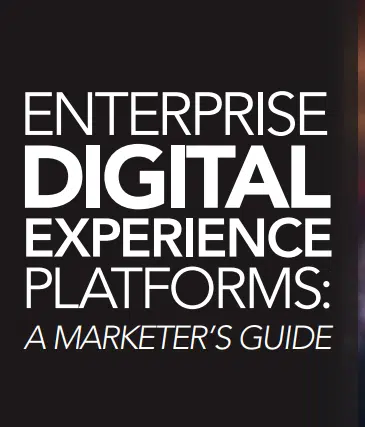While many organizations are excited about digital experience platforms and the power they have to transform content management, understanding your current processes, knowing how to measure success and identifying where you are looking for improvements are all critical to know before jumping into the DXP buying process.
Your organization should start with a comprehensive self-assessment of its business needs, staff capabilities, management support and financial resources.
The following questions should help your team decide whether purchasing a DXP is the right call:

Explore platform capabilities from vendors like Sitecore, Optimizely, Pantheon, WordPressVIP and more in the full MarTech Intelligence Report on digital experience platforms.
Are we able to sufficiently optimize content delivery speed so that it isn’t a hindrance to our SEO goals? Can we deliver the kind of user experience our customers expect, on all of our must-have platforms and devices? Are security concerns or bug fixes taking developer time that could be better used elsewhere?
that may not be part of a DXP?
And can we successfully migrate our existing content to a new platform without sacrificing our search rankings?
What elements of our current tech stack are we looking to replace, and which do we want to keep?
Are we committed to changing our editorial processes to support more reuse and repurposing of our content? Do we have current needs or future ambitions to deliver content to enough different platforms or devices to justify switching?
A lack of executive buy-in can lead to inadequate budgeting, measurement and performance, and broken customer experiences. It is critical, therefore, to secure C-suite support.
What KPIs do we want to measure and what decisions will we be making based on the data? As with any technology investment, it is critical to measure the impact of the DXP on your marketing ROI. Although KPIs will vary by organization or industry, you should be able to measure site or app speed, SEO ranking and traffic improvements, and conversion rate gains for lead generation or ecommerce. You may also be able to gauge whether the CMS is saving your developers’ or editors’ time.
Because DXPs unbundle some of the functions that are built into a traditional CMS stack, it’s important to ensure you’re accounting for all of the pieces you’ll need to assemble for your new infrastructure. You’ll likely need to budget for developer or systems integrator resources for the initial integration. You may also need to budget for editor training and ongoing development to help you realize some of the benefits we’ve discussed here.
Get MarTech! Daily. Free. In your inbox.
























































![Key Metrics for Social Media Marketing [Infographic] Key Metrics for Social Media Marketing [Infographic]](https://www.socialmediatoday.com/imgproxy/nP1lliSbrTbUmhFV6RdAz9qJZFvsstq3IG6orLUMMls/g:ce/rs:fit:770:435/bG9jYWw6Ly8vZGl2ZWltYWdlL3NvY2lhbF9tZWRpYV9yb2lfaW5vZ3JhcGhpYzIucG5n.webp)


















